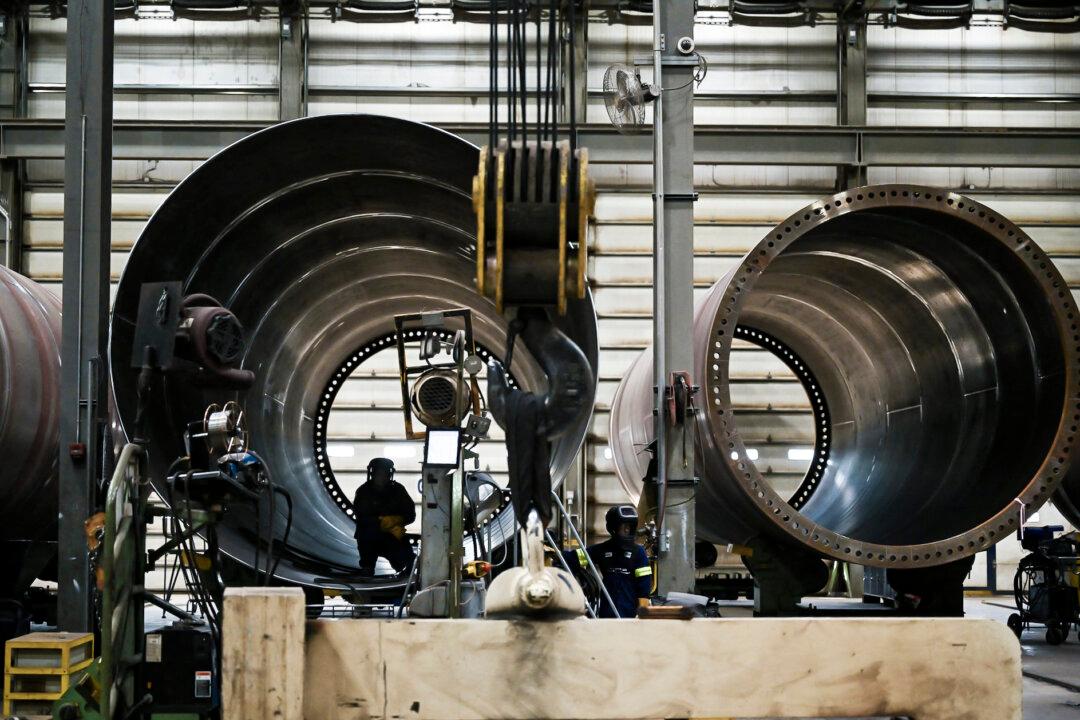The Fed’s Beige Book,
released on Oct. 18, revealed a broad contraction in manufacturing across the United States, reflecting weaker demand and sluggish production.
Most of the Fed’s 12 districts reported declining manufacturing activity, exacerbated by difficulties in finding qualified workers and, in some cases, persistently weak sales.
The Fed’s data on the manufacturing slump was echoed by the Conference Board’s Leading Economic Index (LEI) report,
released on Oct. 21, which recorded a 0.5 percent drop in September—an acceleration from August’s 0.3 percent decline. A significant factor in September’s decline was a sharp decrease in new factory orders, contributing to a 2.6 percent decrease in the index over the past six months.
The LEI, which is designed to forecast economic turning points, points to weak economic growth heading into 2025.
“Weakness in factory new orders continued to be a major drag on the US LEI in September as the global manufacturing slump persists,” Justyna Zabinska-La Monica, a senior manager at the Conference Board, said in a statement. “Overall, the LEI continued to signal uncertainty for economic activity ahead and is consistent with The Conference Board expectation for moderate growth at the close of 2024 and into early 2025.”
The economic picture in the manufacturing sector remains concerning.
September’s industrial production data from the Federal Reserve, released on Oct. 17, confirmed a 0.3 percent drop in factory output. The decline, which was steeper than analysts expected, was exacerbated by the ongoing Boeing machinists’ strike, which weighed heavily on the aerospace sector. Production of aerospace and miscellaneous transportation equipment fell 8.3 percent in September, dragging down the overall index. Manufacturing output fell 0.4 percent last month.
The ongoing manufacturing slump also aligns with recent S&P Global
data, which showed the sharpest contraction in factory activity in over a year, driven by drops in both output and new orders. The Institute for Supply Management (ISM) also
reported its sixth consecutive monthly contraction in its manufacturing activity gauge in September, underscoring ongoing demand weakness and companies’ hesitation to invest in new equipment and inventory.
The persistent downturn in U.S. manufacturing has become a focal point in the 2024 presidential race.
Former President Donald Trump, the Republican nominee, has
pledged to revive domestic manufacturing through tariffs, reduced regulatory burdens, and energy cost cuts, aiming to attract offshored production back to the United States. Vice President Kamala Harris, the Democratic nominee, has
promised tax incentives for key sectors like biomanufacturing, clean energy, and aerospace, alongside an expansion of apprenticeships to address labor shortages.
Meanwhile, economic sentiment has taken a downward turn recently.
The consumer sentiment survey from the University of Michigan,
released on Oct. 11, showed that Americans’ confidence in the economy fell in October after two months of minor gains, with frustration over high prices to blame. Similarly, the Conference Board’s consumer confidence index,
released at the end of September, saw its sharpest drop in three years as consumers became more pessimistic about future labor market conditions.
More than half of Americans feel financially worse off now than four years ago, according to a
recent Gallup poll, which showed a further decline in the share of respondents saying that now is a good time to find a quality job. The economic confidence index, tracked by Gallup, has been mostly negative over the past four years. In 2022, it reached lows not seen since the 2007–2009 recession, largely due to inflation hitting a 40-year high.
Even though inflation has eased since the June 2022 recent peak of 9 percent, the Fed’s Beige Book indicates that many districts reported increasing price sensitivity among inflation-weary consumers. Input costs rose faster than selling prices in September, compressing profit margins and further pressuring U.S. businesses, including manufacturers.
https://www.theepochtimes.com/business/us-manufacturing-slump-continues-amid-economic-uncertainty-5746526?ea_src=frontpage&ea_cnt=a&ea_med=top-news-5-top-stories-0-title-0



No comments:
Post a Comment